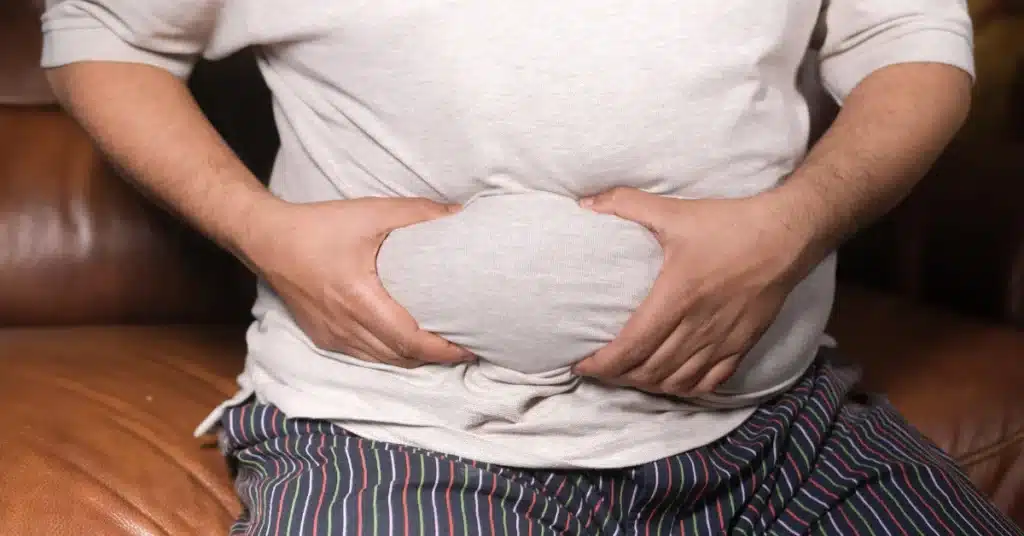Low testosterone levels or Hypogonadism is when the body doesn’t produce enough testosterone hormone.
It is a common condition that affects many men all over the world.
However, can low testosterone cause any facial changes?
Yes, low testosterone may lead to poor and less defined facial features in men.
Let us explore the low testosterone face, its causes, and treatment options.
What does a low testosterone face look like
Low testosterone face refers to facial changes that can happen due to low testosterone levels in men.
One of the most noticeable changes of low testosterone is decreased facial hair growth.
Men with low testosterone may take longer than normal to see beard growth.
Testosterone can also impact skin health in men.
A study states that low testosterone may cause dry, thin, and wrinkled skin. This can make one’s face look older than it is.
Additionally, testosterone may also affect the lower face length and face width.
However, it is important to remember that not everyone may experience similar facial changes.
Causes of low testosterone face shape
 Source: tongwoongboot
Source: tongwoongbootLow testosterone levels in men are the main cause of a low testosterone face.
Age is the main cause of low testosterone, as a study states that testosterone starts decreasing in men aged 30 years or more.
However, many other causes of low testosterone in men may also contribute to low testosterone face.
The other causes include Obesity, testicle injury, problems with some brain glands, medical interactions, and more.
Additionally, lifestyle factors such as poor sleep, exercise, and poor diet can also lower testosterone levels in an individual.
Talk to a doctor to understand more about low testosterone in men and treatment plans.
Treatment options for low testosterone face
There are many treatment options to help with the problem of low testosterone in men.
Testosterone Replacement Therapy (TRT) is the main medical treatment option for low testosterone in men.
TRT treatment options include injections, testosterone gel, testosterone pills, pellets, and patches.
Also, lifestyle changes like proper sleep, a balanced diet, and regular exercise can help boost testosterone levels naturally.
Some skin treatments can also help with dry skin and skin texture due to low testosterone.
Always see a doctor before starting any medication or treatment plan.
Key Takeaways
Low testosterone is a common condition when the body doesn’t produce enough testosterone hormone.
However, can low testosterone cause any facial changes?
Yes, low testosterone may cause facial changes like decreased facial hair, dry skin, and poor facial features.
One may help low testosterone face by treating the causes of low testosterone in men like Obesity, testicle injury, and more.
The other treatment options include Testosterone Replacement Therapy, with the help of testosterone gel, testosterone pills, injections, etc.
Frequently Asked Questions
Does low testosterone change your face?
Yes, low testosterone can change your face. It may make your skin dry, increase facial fat, and cause problems with growing facial hair. It may also affect one’s face shape and make your face look different from how it used to be.
Is low testosterone face treatable?
Yes, a low testosterone face is a treatable condition. Treatment options include Testosterone Replacement Therapy, lifestyle changes, and skin treatment. Consult a doctor to get a proper treatment plan.
What are the causes of low testosterone in men?
The causes of low testosterone in men include aging, Obesity, testicle injury, problems with some brain glands, medical interactions, and more.
Does a long face mean low testosterone?
No, low testosterone is not the only cause of a long face. Face shape is also influenced by genetics and not just hormones. Low testosterone may cause some facial changes, but having a long face is not a direct sign of low testosterone.
What is a low testosterone level in men?
A low testosterone level is when the body doesn’t produce enough testosterone. The normal testosterone level in men is considered 270-1070 nanograms per deciliter (ng/dL). Therefore, low blood testosterone is considered less than 270 ng/dL.
When referencing outside resources, GoodrxMedicine always provides full citations. To learn more about the measures we use to maintain the quality of our content, please review our Content Information Policy.










